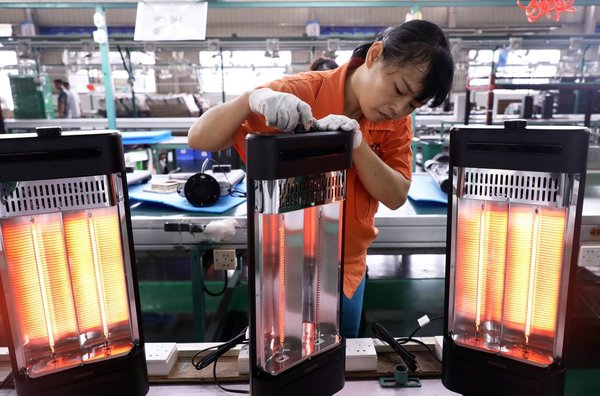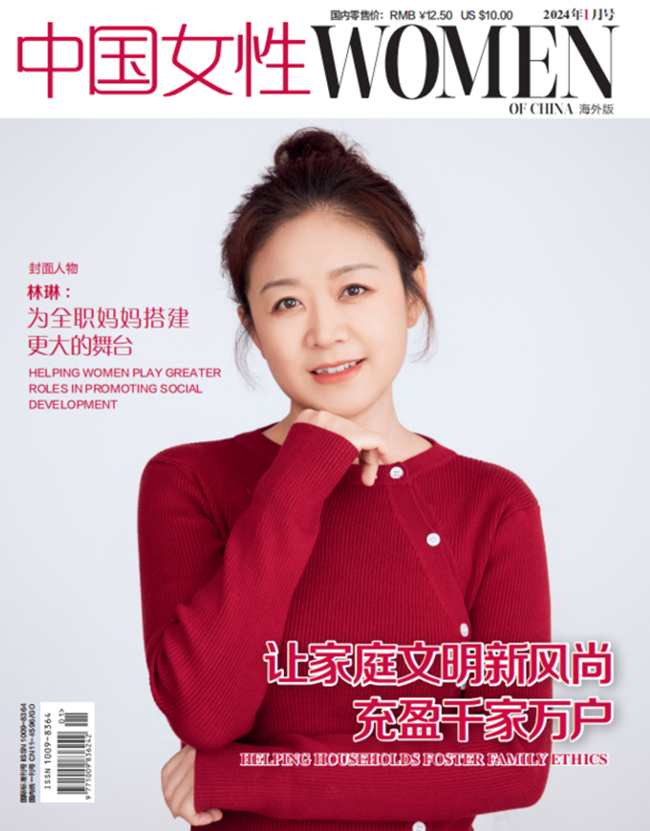Hiring Boom Boosts Manufacturing Rebound in 'World Factory'
 |
| A worker checks electric heaters at a company in Foshan, south China's Guangdong Province, Sept. 29, 2022. [Xinhua/Huang Guobao] |
GUANGZHOU, Feb. 16 (Xinhua) — Homa Appliances struggled to find enough labor suits for the influx of workers, a rare occasion for a company that has long suffered from a paucity of returned workers after the Spring Festival production lull.
Less than two weeks after the Spring Festival holiday, the fridge maker in south China's manufacturing heartland Guangdong Province had filled all its vacancies. The company planned to hire 1,700 workers this year and received 2,600 applications.
"Nearly 90 percent of our workers that headed back home for the Chinese New Year have returned, a three-year high for the company," said Xi Zhonghua, assistant to the board chairman at Homa Appliances.
In industrial cities in Guangdong, a hiring blitz has contributed to a smooth resumption of production after the Spring Festival, thanks to the lifting of COVID-19 travel restrictions, supportive policies, and an optimized labor structure.
A manufacturing powerhouse known as the "factory of the world," Guangdong is also one of the largest employers of migrant workers, who usually leave for family get-togethers before the Chinese New Year and return to work at least 15 days afterward. The reopening of plants after the holiday has long been troubled by a shortage of returned workers amid rising labor costs and inter-regional competition for workers.
This year, the local labor market fizzes after China further optimized its COVID-19 response to lift travel restrictions. Major factories around the Pearl River Delta said workers have returned to work earlier than before, rebooting the post-holiday labor market sooner than expected.
Data from the human resources authority of Zhongshan, a city known for its household appliance industry, showed that from Jan. 28 to early February, a daily average of 100,000 migrant workers returned to the city, which will close the labor gap by the end of February.
In manufacturing hub Dongguan, most surveyed companies said they recruited enough workers without much trouble. Officials said the city's recent work resumption rate surpassed that of previous years to hit over 90 percent.
This year's labor market boom also benefited from intensified efforts from companies and local governments to retain qualified workers, including salary hikes and bonuses for returned workers.
The Dongguan municipal government said it has poured at least 20 million yuan (about 2.9 million U.S. dollars) worth of subsidies to boost post-holiday recruitment this year. Local companies, for instance, can receive 1,000 yuan for each new worker recruited.
The phenomenon also highlights a more long-term trend: the demand for labor-intensive jobs, which constitutes the majority of the total labor demand, is declining.
Government data shows Dongguan's demand for labor-oriented workers dipped by 14 percent year-on-year. In contrast, the demand for skilled and managerial workers rose by 3.6 percent and 10.4 percent, respectively.
The changing labor landscape reflects a better industrial structure amid the digital transformation and the pursuit of high-quality development, said Zhao Liping, director of Dongguan's human resources authority.
Zhao added that the smooth recruitment of workers and early resumption of production bode well for robust growth in the manufacturing hub this year.
According to the Ministry of Human Resources and Social Security, as of Feb. 5, China had held about 20,000 recruitment events and arranged over 9,000 chartered buses, trains, and flights to send some 500,000 workers back to work after the holiday.
(Source: Xinhua)
Please understand that womenofchina.cn,a non-profit, information-communication website, cannot reach every writer before using articles and images. For copyright issues, please contact us by emailing: website@womenofchina.cn. The articles published and opinions expressed on this website represent the opinions of writers and are not necessarily shared by womenofchina.cn.






.jpg)

 WeChat
WeChat Weibo
Weibo 京公网安备 11010102004314号
京公网安备 11010102004314号